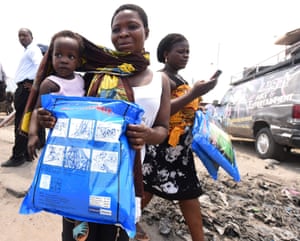The city of Liverpool is aiming to become a “fall-less” city – so that all older adults with limited or reduced mobility can venture forth into the streets, parks and other public places knowing that their chances of falling have been significantly reduced. One-third of older people in the UK experience a fall each year, rising to half the over-80s. Working with the Universities of Liverpool and Cambridge, the city council is implementing falls prevention and mitigation as part of its Age-Friendly City (AFC) initiative.
Promoted by the World Health Organisation, the age-friendly city movement has spread across the globe. With projections that half Europe’s population will be over 50 within a couple of decades and that the world will have more people over 60 than under 16 by 2050, the age-proofing of our environments is high on the agenda.
Already more than 500 million people over 65 live in cities. The urban old reach 250 million in Asia, 57 million in Latin America and 23 million in Africa. Indeed 90% of us, young and old, will live in urban environments by the end of the century.
The age-friendly city initiative is now an international movement supported by forums across the globe
The age-friendly city initiative is now an international movement supported by forums across the globe. The 2015 sustainable development goals (SDGs), call for inclusive urbanisation that enables older persons to participate in planning and decision-making, have access to safe and affordable public transport, and enjoy safe, inclusive and accessible green and public spaces.
While there is a strong emphasis on health, including the successful prevention of disease, disability, frailty and the promotion of healthy lives and activities, the age-friendly movement has moved beyond this to include the natural and built environment, cultural attitudes, social capital, equity and inclusion.
Investing in public transport is essential to create age-friendly cities. Older women in particular rely on public transport to make the complex journeys enabling them to juggle multiple roles as caregivers, housekeepers and income providers. Simple initiatives like those in Ukraine, promoted by the civil society organisation Turbota pro Litnih v Ukraini encourage older people to take an active role in improving public transport services, extending bus routes to poorly-served districts, and relocating bus stops so that local health centres can be easily accessed.
Similarly, various health initiatives encouraging physical activity and healthy eating, and creating communities that support people with dementia are being promoted. Colombia’s capital, Bogotá, has now implemented schemes with the assistance of HelpAge International (HAI) which provides guidance to families and carers of people with dementia, signposting them to resources and support available in the urban community.
However, there is much to do. The recent HAI Ageing and the City report found that in “the majority of low- and middle-income countries, most people aged over 50 reported not feeling safe walking home alone at night”. And reports have highlighted the increased vulnerability of older adults in times of crisis – such as the New Orleans hurricane in 2005 or the 2011 Japanese tsunami, where older people were disproportionality affected. While Ageing and the City may call for older people in be more involved in disaster preparedness planning, the evidence that this is happening is limited.
The future for the age-friendly city movement it to engage with the smart city debate. The Citris Invention Lab at the University of California is exploring “connected ageing landscapes” which link body, home, community and caregiving in one integrated technological flow.
Something as simple as interactive television promotes social and civic engagement – enabling older adults to connect with friends, neighbours and family, actively engage in community life, interact with healthcare provision, and earn an income.
But cutting-edge inventions – assistive technologies, smart medication management tools, smart body sensors, robotics and autonomous vehicles – can combine to provide a flow from person to home to cityscape. Connected medical devices using external sensors and remote monitoring have the potential to ease the struggles for older people in cities.
The city has the potential to become one integrated physical and virtual space – within which less-mobile adults can participate to the best of their ability. Age-friendly cities need to be smart cities. The age-friendly city movement must engage with the technology of the future to provide an urban environment where we can all experience a healthy old age.
Sarah Harper is professor of gerontology at the University of Oxford and supports the Bicester Healthy New Town initiative through research.
Join our community of development professionals and humanitarians. Follow @GuardianGDP on Twitter.
The fall-less city and other innovations for a healthier old age


